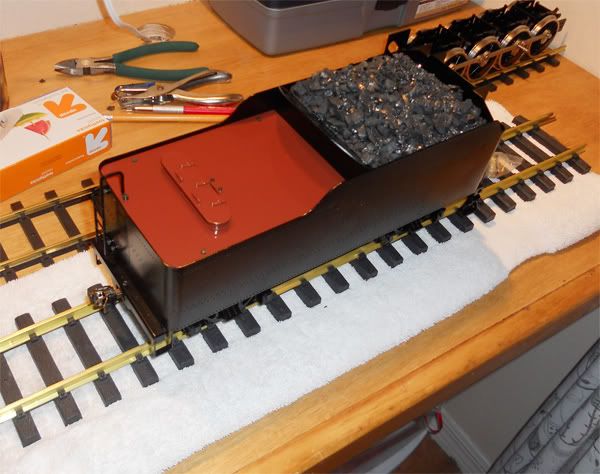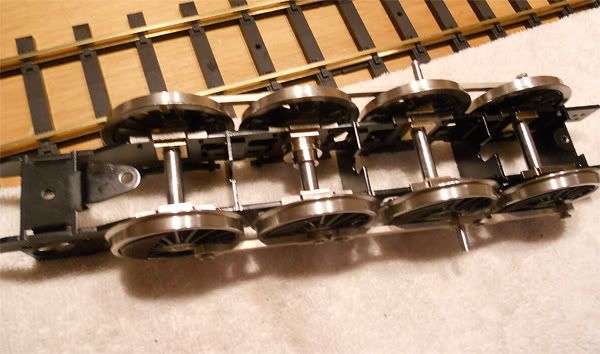Ever have that "one" thing on your mind and until you sorted it out, you could not think of too much else? Well, not to that extreme, but one thing about building the cylinders had been on my mind. Since that is the next step in my process of constructing the Aster Mikado, I had to have a trial run. On some of the Aster Mike kits, the cylinder studs were a bit short and as you sandwich the cylinder, valve assembly together the threads on top came up short when attaching the nut atop to fasten everything together.
I don't know for certain whether or not I have short studs, but one threaded side of the stud is longer than the other. According to the assembly diagrams, the longer threaded side goes into the cylinder body with the shorter threaded side, separated by a smooth shaft, sticks out atop the valve plate and the nuts go on here. Well, if I have the longer side in the cylinder and I assemble everything together, there is not enough threads to protrude above the plate to give the nut threads to attach to. If I reverse the studs, then there is too much threads atop and it would interfere with the cylinder shrouds later on in the building process.
The two options here are to get the correct length of studs replaced by Aster, or thread the studs in then take them out enough to give more threads on top. I chose the latter option. I was given the advice to add some loctite to the bottom threads so that when I attached the nut on top it would not pull the studs out when tightening the nuts. I chose to go another route. After seeing if the method would work, I chose to add loctite to the top threads and then put the nut on with the stud filling up all the threads in the nut so the stud body was flush with the top of the nut. I will let the loctite dry and what I have effectively done is create a bolt to screw into the cylinder sandwiching everything together.
The reason I did this was on account of every time I would try to add the nut, I would end up forcing one or more of the studs further into the threads in the cylinder body. Either way would be fine I guess, but I chose to do this method. After vacation when I lap the cylinder I can just put everything together and screw in the studs/bolt.
Update: Since doing this, I have taken those nuts off and cleaned up the threads. I'll use loctite 242 on the bottom threads which go into the cylinder block instead.
I measured the height the studs need to be (which is 12mm to give the nuts on top enough threads to be flush with the nuts after snugging them down). Thanks David.



